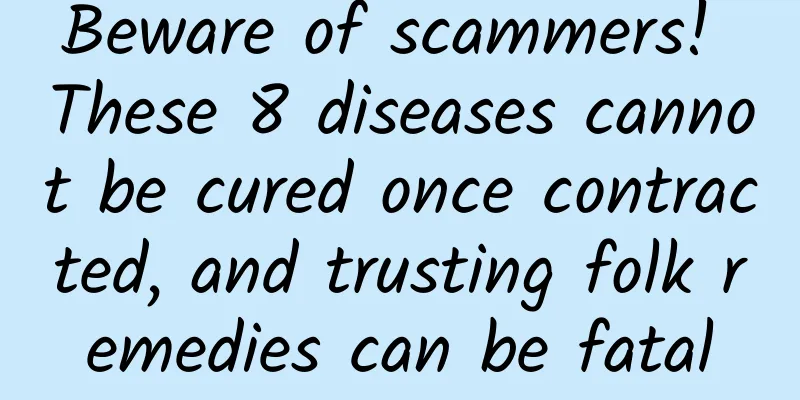A netizen posted a picture, and the comment section couldn't sit still...

|
Review expert: Zhang Yuhong Zhengzhou Central Hospital Affiliated to Zhengzhou University Chief Physician of Dermatology Have you ever seen a post like this: someone accidentally posted a photo of his hand online, but in the comment section, someone noticed that his fingers looked like typical "finger clubbing" and kindly offered suggestions. The owner of the post saw the comments and went to the hospital for a check-up, only to find that he really had finger clubbing. So, what is clubbing? What diseases does clubbing indicate? Can ordinary people like us determine whether we have clubbing? Let's find out. 1What is finger clubbing? Clubbing is also known as drumstick finger in the folks because of its shape similar to a drumstick. The manifestation of clubbing is generally the proliferation and swelling of the soft tissue of the distal joints of the fingers or toes , which makes the fingers deformed and enlarged from ordinary fingers or toes. And this deformation and enlargement is not accompanied by pain and does not affect the normal movement of fingers and toes. Simply put, the external manifestation of clubbing is that the fingers or toes are significantly enlarged, and the disease is symmetrical , commonly seen in both hands and feet. If only one hand or one foot is enlarged, it may not be clubbing . From a medical point of view, the soft tissue between the bone and the nail at the end of a normal person's finger is less than 2 mm, but in clubbed fingers, it can reach 3 or even 4 mm due to increased blood volume and interstitial edema. It is said that the symptom of clubbing was first discovered by the ancient Greek physician Hippocrates, so clubbing is sometimes called "Hippocrates' fingers", but this symptom took thousands of years of research to attract the attention of clinicians. Statue of Hippocrates Source: Wikipedia 2 Causes of clubbing In the past, the causes of finger clubbing were explained as follows: Under normal circumstances, vasodilators in the blood circulation are inactivated in the lungs. In certain pathological conditions, blood bypasses the lungs, causing the fingers to be perfused with blood that has not been filtered by the lungs, or the amount of vasodilators inactivated by the lungs is reduced, or the amount of vasodilators produced by the lungs is increased, which ultimately causes the end of the finger to swell. A patient with Eisenmenger syndrome has clubbing of the fingers due to pulmonary hypertension. Source: Wikipedia Based on this theory, if the blood does not pass through the lungs during circulation, the blood flowing into the fingers is blood that has not been filtered through the alveoli, then this blood is bound to lack oxygen, so people with clubbed fingers are likely to have lung problems . However, many clinical studies and pathological analyses have shown that hypoxia is not the main cause. Modern medicine generally believes that the real cause of clubbing is the pathological factors of the primary disease. The cytokine theory holds that megakaryocytes and platelets aggregate in the peripheral blood vessels of clubbing. The released platelets derive growth factors, which increase the permeability of blood vessels. At the same time, the connective tissue on the inner wall of blood vessels increases, leading to restenosis of blood vessels and accumulation of hypoxia, which ultimately causes clubbing. The vascular endothelial growth factor theory believes that vascular endothelial growth factor plays an important role in the formation of clubbing. The concentration of vascular endothelial growth factor affects the occurrence of certain diseases, but the specific pathology is still unclear. To date, although the mechanism of clubbing has not been fully understood, overall research has shown that the cause of clubbing may be related to the following factors: abnormal estrogen or gonadotropin levels, excessive secretion of growth hormone, ectopic secretion (a hormone that should be secreted by a certain endocrine gland is secreted by a tissue in other parts of the body), etc. 3What diseases may clubbing indicate? How can you tell if you have clubbing? As mentioned in the previous article, clubbing may be caused by blood circulation not passing through the lungs, so clubbing largely indicates respiratory diseases. After a long period of medical observation and statistics, these respiratory diseases mainly include primary bronchial lung cancer, oat cell carcinoma, etc. It is reported that about 10% of patients with bronchial lung cancer have the sign of clubbing. Usually, the clubbing of such patients is characterized by acute onset, and the fingers may swell in a very short time, accompanied by severe pain. In addition, clubbing may also indicate cardiovascular, digestive tract and other diseases. Finger clubbing can manifest in different ways, and you can self-test based on several typical forms: The last segment of a normal person's finger (N in the picture) Superficial clubbing (A in the figure): Uniform swelling at the ends of the fingers. Parrot-beak clubbing (B in the figure): The swelling is mostly in the proximal part of the finger. Drumstick clubbing (C in the figure): The soft tissue in the middle of the knuckle at the end of the finger is swollen. Comparison chart of normal fingers and clubbing fingers Source: CNKI In addition, because the fingertips are swollen, the skin outside the clubbed fingers is smooth, and the wrinkles on the surface of the fingers are reduced compared to normal people. At the same time, it can be obviously felt that the nails are more fragile. In addition to the above-mentioned judgment based on the swollen area of the finger, another commonly used self-examination method is to test through the Schamroth sign test (as shown in the figure), that is, the subject is asked to stick the surface of the nail and the back of the end joint of the finger together on the same finger of both hands. Under normal circumstances, a gap will be formed between the fingers of both hands (A in the figure), but when clubbing occurs, the gap formed will become smaller or even disappear (B in the figure). Comparison chart of normal fingers and clubbing fingers Source: CNKI Classic clubbing Source: CNKI In addition to judging clubbing at home, you can also go to a medical institution and use a more scientific method to check and judge. At present, there is a method that can use ultrasound to diagnose clubbing, which is simpler and more convenient . Ultrasonic technology can detect soft tissues and joints under the nails. The development of science and technology has also provided conditions for the scientific judgment of clubbing. Having said so much, in fact, even if you suddenly find yourself with symptoms of clubbing, there is no need to panic. After all, this sign is only of auxiliary diagnostic value. The important thing is to seek medical attention in time and receive correct diagnosis and treatment. |
Recommend
This "sunscreen magic tool" is really risky if used incorrectly! Many people still use it on their children...
Summer is coming Various "sunscreen magic to...
The secret of Tencent Video’s advertising materials to achieve high volume
The author recently met a friend in the same indu...
Don't stay up late! The DNA in your body is constantly breaking down, and it can only be repaired if you get enough sleep!
Expert of this article: Zhao Wei, MD, associate c...
E-commerce game design and planning methods (Part 1)
The era of content-based e-commerce has quietly a...
How to quickly increase fans on Kuaishou? How to buy Kuaishou fans?
Professional Douyin and Kuaishou likes-boosting p...
[Smart Farmers] A "iron watermelon" grows on a gourd tree! How powerful is this "all-rounder" in the plant world?
Your browser does not support the video tag Calab...
Gull-wing doors, king chairs, 5C supercharger, Haobo HT creates a luxurious mobile large flat for elite families
Hyper HT, a medium-to-large luxury pure electric ...
Mengzhuangyuan AI learning all-in-one machine experience: a learning companion for children and an educational tool for parents
Recently, Yue Yunpeng, a well-known crosstalk art...
About 1.5 billion people have hearing loss! Noise-isolating earplugs vs. noise-isolating earmuffs, which one is better and how to choose?
The World Hearing Report released by the World He...
Director of Steve Jobs documentary calls Apple 'rude and callous'
[[130146]] Apple is not interested in participati...
How much does it cost to customize the Qitaihe Electric mini program? What is the price quote for the customized Qitaihe Electric Mini Program?
The factors affecting the quotation of Qitaihe El...
The deadly toxin "fumonisin" in cold noodles, in what other foods is it hidden?
Recently, the news that one woman died and the ot...
Which one is better for you, the new iPod touch or the iPad mini 3?
Apple 's latest iPod touch uses an A8 process...
What the hell is this? How to choose the online promotion method?
Recently, many companies may be promoting the &qu...









